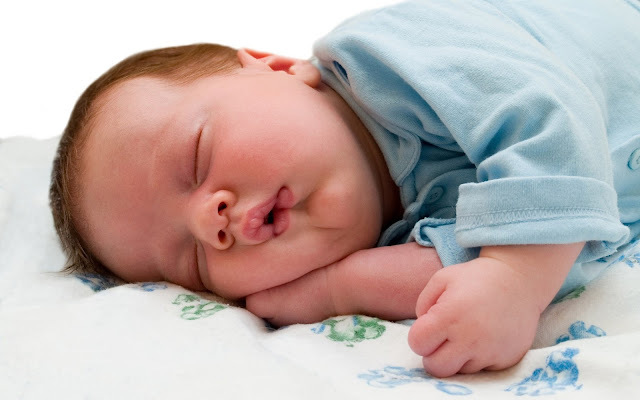infolinks
Saturday, 6 February 2016
7 Things You Do In Your Sleep
1. Roam the House
Sleepwalking is one of the prototypical parasomnias that occur during non-REM sleep, says Gehrman. "One of the common misconceptions about sleepwalkers is that they're acting out their dreams." But because sleepwalking occurs during that deep Stage 3 sleep, it's not associated with dreaming. Because of this, it may be tough to wake or redirect a sleepwalker—and they might become agitated—but it's unlikely that the situation will turn dangerous.But the consequences the next day could be more serious: A 2013 study published in the journal Sleep found that adult sleepwalkers had a higher frequency of daytime sleepiness, fatigue, insomnia, and anxiety symptoms than those who stayed tucked into bed.
2. Talk or Scream
Sleepwalking and sleep-talking are very common in kids, and episodes usually end around puberty, says Gehrman. Night terrors—when you sit up in bed screaming or yelling—is also often seen in children. "Night terrors are activations of the fear response during sleep," he explains. "Kids may sit up in bed with their eyes wide open, but they're actually fast asleep." Perhaps not surprisingly, studies have shown that children who have been bullied are more likely to suffer night terrors by the age of 12. And these events aren't unique to kids: According to the American Academy of Sleep Medicine, 6.5% of children and 2.2% of adults experience them.
Night terrors are often mistaken for nightmares; the difference is that nightmares occur during REM sleep when the brain is more active, and people generally remember them the next day, while night terrors happen during Stage 3 sleep and people have no memory of them when they wake up.
3. Send Text Messages
Sending text messages while sleeping may seem strange, but it not surprising considering the number of people who snooze right next to their phones. One survey from Villanova University found that out of 300 students, 25 to 35% had sent text messages while they were asleep. This non-REM parasomnia is harmless—but it could be embarrassing.
4. Drive
A few non-REM parasomnias can be dangerous, and they usually happen when sleepwalkers leave their house. "I recently had a patient with RLS who was treated with Ambien," says Michael Howell, MD, associate professor in the department of neurology at the University of Minnesota. "The first night he took the medication he drove in his sleep and woke up in a snow bank after plowing his car into a tree."
Taking a sleeping pill like Ambien can contribute to non-REM parasomnias, because, according to Howell, the drug will keep you asleep even when your body knows it should be awake. A better solution might be getting to the root of the problem. According to Howell, depending on the severity of RLS—which is a movement disorder associated with a creepy-crawly sensation in your legs that makes it hard to sleep—it can be treated with exercise and diet, iron pills, or medications.
5. Prepare and Eat Food
"I know of a woman who used to go to the kitchen in the middle of the night and eat raw onions like they were apples," says Gehrman. "She'd wake up with bad breath and have no idea what had happened." Because it occurs during deep Stage 3 sleep, sleep-eating also falls under the category of non-REM parasomnia. As for who's likely to chow down in the middle of the night, some evidence shows that people on restricted diets are more likely to sleep-eat. And Howell confirms that it's mostly highly caloric foods that sleep-eaters make a beeline for, but they'll often eat non-nutritious substances, too. They may chew ice or, "we see people put butter on cigarettes and eat them." Not surprisingly, sleep-eating can cause weight gain, dental problems, or injuries from preparing the food.
6. Have Sex
Sexsomnia, or "sleep sex" is another example of a non-REM parasomnia, and it includes intercourse, masturbation, and groping. According to research from the American Academy of Sleep Medicine, sexsomnia was reported by almost 8% of patients at a sleep disorders clinic, and is nearly three times more prevalent in men than in women. "I think that sleep related sexual activity is far more common than people realize," says Howell. "It's not really information that people volunteer," but, he notes, when he presses patients who have displayed other non-REM parasomnias on the topic, they'll usually admit that they've done it.
7. Act Out Their Dreams
This is where sleep behaviors can get dangerous. Normally during REM sleep—the stage of sleep when we do the most active dreaming—our muscles are paralyzed, which is thought to protect us from acting out our dreams. But in some cases, there's a failure of paralysis, so people do act out their dreams—and that's called REM behavior disorder. According to The National Sleep Foundation, these types of episodes usually occur in men over the age of 50, but can happen to anyone, especially people taking sleeping pills or antidepressants.
While the other non-REM parasomnias can be a nuisance, REM behavior disorder can actually be harmful because sleepers can hurt themselves or their bed partner. For example, a common dream is that you're being chased or attacked, so people might wake up choking whomever is sleeping next to them. "I had a patient who was dreaming he was playing basketball and was clutching the ball," says Howell, "Except that he was really gripping his wife's head." Howell has also treated a patient who dreamed he was Spiderman and tried to leap out the window, and has seen many other examples of sports-related dreams, such as when the dreamer will slide into a piece of bedroom furniture, thinking it's home base
Subscribe to:
Comments (Atom)






